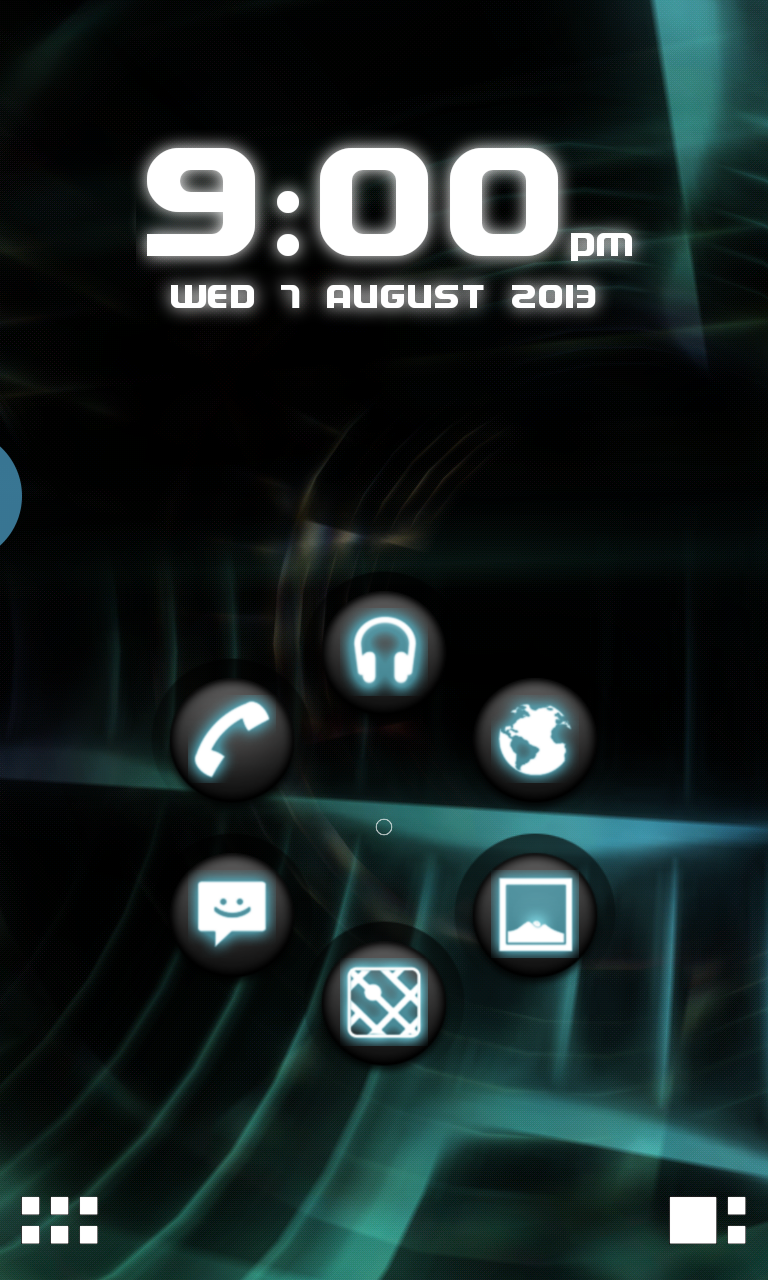It runs entirely in RAM, administration is super simple, no ssh, easy to update/and upgrade, immutable, minimal distro designed specifically for secure container usage.
- 2 Posts
- 56 Comments

 18·1 year ago
18·1 year agoHow about Gogs? The whole thing is < 30 MB, and is lightweight enough to run on a Raspberry Pi. You can even get a native binary package if you want to run it without the overhead of Docker.

 12·1 year ago
12·1 year agoYep, just use the rectangular selection from the edge panel and you can save it as a screenshot or extract the text.
Native Alpha is an opensource alternative.

 2·1 year ago
2·1 year agoProbably Oblivion and Skyrim. Depends on the controls though, some PC games require a mouse and keyboard to play (like Age of Empires), so it would be interesting to see how they handle button mapping and mouse drags/gestures.

 1·1 year ago
1·1 year agoYes, in theory. In practice, Github has become a hub for such living documents, especially in the Linux/OSS world, so it isn’t strange for people to look there for guides and recommendations.

 2·1 year ago
2·1 year agoI’m not opposed to it, but is there demand for it to be on GitHub?
There is! These sort of guides are best suited to be hosted at Github/lab because of their dynamic nature. Any recommendations and “best practice” today might easily become outdated tomorrow in this fast-moving Linux world! Plus you can have contributors too submitting corrections and updates (if you wish to merge 'em), so you’re not left alone doing all the work.
Here’s an example of one such guide I’ve used in the past that’s still being updated:

 1·1 year ago
1·1 year agoMini all-in-one PC are expensive, just buy a used/refurbished regular PC. If you want, you can get them in SFF (Small Form Factor), which are still upgradable and a better option than AIOs. Here are some results on eBay for reference.
I’d recommend getting AMD because of their excellent Linux support and overall better gaming performance. Also, you don’t need a dedicated GPU for playing old games, even more so since AMD’s integrated GPU is a lot better than Intel’s, and works better on Linux too.
But it you want to play current games, you’ll need a dedicated GPU, and that $250 budget isn’t going to cut it unfortunately. However, you always have the option of buying a cheap used GPU later on, when you’ve got some cash to spare. But for now, if you focus on older games then the integrated GPU on an AMD will do fine.

 15·1 year ago
15·1 year agoThis hasn’t aged well:

I wonder if getting a smartwatch with tap-to-pay, like the Pixel watch could help with that? You could still continue to use GrapheneOS on your phone (assuming the watch has no phone dependencies).

 9·1 year ago
9·1 year ago- 2011, HTC Desire

Running ADW Launcher on probably Android Froyo, and the Tron Legacy theme. Tron Legacy was released only a month prior to this screenshot, and I was a huge fan, so I themed everything I had with Tron themes. It was a tough decision whether to go for the Nexus One or the Desire, in the end, I picked the Desire because it had slightly more RAM and physical navigation buttons. Plus, the optical joystick on it was awesome. Also most likely running a custom ROM, not sure which one but possibly Oxygen.
- 2013, Nexus 4


I guess I was testing out TeamViewer for Android here. Not sure about the launcher, but still stuck on the Tron theme lol. Running Android Jellybean, Paranoid Android, with pie controls in the second screenshot (man I miss the pie controls. And old PA, with the per-app DPI, Halo and other cool stuff).
- 2013, Nexus 4

Still on the Tron theme (don’t judge), but this time I’ve switched to Smart Launcher. This is probably the launcher I liked the most and stuck with the longest, thanks to it’s automatic app categorization, which meant I no longer had to create folders and manually organize my apps. I stuck with Smart Launcher until it’s inevitable enshittification started. Running CyanogenMod 11 (KitKat).

It’s November 2013 and I finally got over Tron lol, and started getting more into minimal home screens.

Running XuiMod (Xposed module), which brought back the Gingerbread-style recents. (on KitKat).
Bonus video showing off my entire setup running Smart Launcher, crDroid and a few of my apps at the time: https://youtu.be/2JMBPtKzx2o
I’ve got tons more screenshots and videos, but don’t want to spam this thread. If anyone’s interested though I’ll be happy to share. :)

 2·1 year ago
2·1 year agowhen the ntfs3 driver was released I moved my games to an NTFS partition, i don’t remember precisely but some wouldn’t work, and then unlike my ext4 or btrfs partition which were unbreakable, a lot of things became unreadable and undeletable after a forced shutdown
Did you symlink the compatdata folder?
now I’m planning on making a btrfs partition for my games and using winbtrfs
I heard that with winbtrfs, you run into permission issues where every time you boot back into Linux, you’d need to chown any files you’d created in Windows, which would be a PITA. Also, I heard winbtrfs in Windows isn’t as stable as ntfs3 in Linux. Neither solution is unfortunately perfect so you may need to try and see what works best for you.
In general though, I believe regardless of what filesystem you choose, it’s recommend to NOT share everything and instead maintain a copy of the library native to each OS, and just share the “common” and maybe the “download” folder, and let Steam discover the existing files when you proceed to install the game.

 6·1 year ago
6·1 year agoCassia is a Wine fork + FEXCore + easy to use GUI with the ability to create Wine prefixes. It’s made by the same guys who made the Skyline Emulator, which was prolly the best Nintendo Switch emulator on Android, so the expectations are pretty high.

 17·1 year ago
17·1 year agoFrom from what I heard, apparently it’s a lot slower than Box4Droid, although it’s easier to use.
There’s also the upcoming Cassia emulator, which looks promising and should be better than either of them.
As for the use case, there are plenty of good PC games without a decent Android port/equivalent. A lot of us spend more time on Android than on PC, so it makes sense that we’re starting to see more and more projects like these (besides, most native Android games suck).
LoL and WoW basically work perfectly on Linux (platinum rated). As for BG3, it works fine for the most part with Proton-GE / Proton Experimental. But since it’s still very new though, expect bugs, but also expect the compatibility to get even better within the next few weeks.
My question then is “Well, do you game?”
Really though, the question shouldn’t be “do you game”, but "do you like tinkering around, fixing things, troubleshooting, and learning new things, in your free time? ", or, “do you like major changes, and having the patience to make a major change in your life work, or would you rather prefer familiarity and stability, a mindset of ‘if it ain’t broke, don’t fix it’?”
If someone has been running Windows for 35 years and hasn’t checked out Linux already in some capacity, I doubt they’re the kind who likes change, the kind of person who likes to experiment and tinker. Personally, I wouldn’t recommend Linux to them based on that reason, unless they’re also the non-tech-savvy kind who have very simple requirements - like my Mum and Dad, who’ve been running Linux for over a decade now without any issues (because their requirements are very simple, so Linux fits their needs perfectly).
Also, since you’re already on Fedora, you should check out Nobara, which is gaming-optimized Fedora-based distro made by GloriousEggroll, the guy who makes Proton-GE.
They said Proton-GE btw, which is a custom build of Proton by GloriousEggroll, which has a bunch of tweaks to make various games run, or run better.
https://github.com/GloriousEggroll/proton-ge-custom#overview
Proton-GE (or Lutris with Wine-GE) is what you really should be using, if you intend to game Linux.

 1·1 year ago
1·1 year agoInteresting, never heard of ReviOS before. Is there a list of changes they’ve made? I looked thru their site and couldn’t see any such details their docs. I’d like to know what sets it apart from the likes of Tiny11 and Ghost Spectre Superlite etc.


I that case, check out Fedora CoreOS.